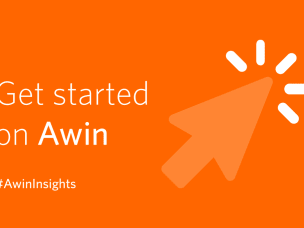How influencer marketing can give you global reach with minimal cost
Written by Emma Sharp on 10 minute read
Delivering global reach through authentic, arresting content.

In 2016 we discussed the phenomenon of influencer marketing, and in that time, it has expanded seemingly exponentially. Over the last three years, influencer marketing has been transformed from a promising tactic to an essential element in marketing budgets. According to Forbes Magazine, part of this growth is attributable to the widespread adoption of ad blockers and the continuing decline in TV and radio audiences.
After much experimentation and many pilot programs, brands and marketers have evolved a firm grasp of how influencer marketing can provide a global reach at minimal cost, making a healthy contribution to their bottom line.
What is influencer marketing?
At its heart, influencer marketing is the melding of celebrity endorsement and subtle product placement. A recognized trusted influencer gives their stamp of approval for a brand by incorporating it into a post on their social media feeds or blog.
The growth in popularity of this marketing tactic has seen a rise in the number of influencers. Traditionally they post a picture on Instagram, posing with a product and weaving a brand mention into their lifestyle. That post is seen by their followers all over the world, all at a fraction of the cost of traditional, global marketing execution. However, in September 2018, the Advertising Standards Authority (ASA) issued further guidelines as to how influencers must mark any promotional posts clearly so their followers are aware when products have been gifted or payments taken to ensure transparency of content and trust.
Taking your reach global
So how does influencer marketing dramatically extend a brand’s reach? With many influencers having enormous followers on social media, aside from extending a brand’s geographic reach, many also help brands touch a larger or super-relevant audience.
Additionally, here are three ways influencers are able to extend your brand’s reach:
1. They improve brand sentiment
The end game for any brands is to win the hearts and minds of consumers and embed a positive brand image in their consciousness. So, it's little wonder influencer marketing helps to promote their brands as influencers can have an enormously positive impact on brand sentiment.
This effect is amplified by collaborating with influencers who genuinely believe in your product. Authenticity amongst your influencers often translates directly into positive brand sentiment amongst the social media followers.
2. Authentic storytelling lifts audience engagement
Influencers have usually built a dedicated following of fans by being true to themselves and allowing their real personality to shine through their content. These influencers provide their followers with inspiration by implanting their personal expression through arresting and engaging content.
This is one of the primary reasons why influencers are so skilled at creating authentic content and incorporating the brands they promote. They look to articulate an authentic story revolving around their own brand, rather than just focusing on the brand’s features and benefits.
This emotional authenticity helps maintain audience engagement, propelling their client brands’ reach despite their content clearly being designed as promotional vehicles.
It’s all about forging emotional connections. After all, an engaged audience provides a much more conducive platform for brands to convert them into paying customers.
3. Lower costs delivers a higher ROI
One of the key benefits of influencer marketing is its attractive ROI. The comparatively low costs of influencer marketing, compared to traditional marketing methods are driving its spiking adoption.
These attractive yields are enabling many marketers to grow their social media following and uplift engagement. Other marketers are employing influencer marketing to drive traffic to their websites while others are using the technique as a low-cost way to drive increased sales.
However, these are not the only reasons why an increasing number of brands are leveraging influencers for their marketing campaigns. Marketers praise influencers’ ability to raise brand awareness on social media and to deliver a more tightly targeted audience.
When factors such as social sharing and publicity are included, the ROI from an influencer campaign in terms of sheer earned media value (EMV), is attractive. Indeed, according to the Huffington Post, studies show influencer marketing earned £5.25 in EMV for every dollar spent on paid media and generated £8.95 in EMV for every pound spent with influencers.
Within the influencer space, there are also many different types of influencers, and their performance and fit for your brand objectives can vary so it’s important to take this into consideration when looking at working with influencers. One of the most well-known and fastest-growing sub sets, are micro-influencers.
Micro-influencers can take your brand global
Picture your best friend sharing their experience of their favourite new product. This is the world of micro-influencers.
As entrepreneur.com pointed out recently, consumer trust in traditional advertising and in the corporate sector overall is bumping along at an all-time low. This has prompted a migration to a more authentic two-way conversation model based on discovery across social media.
Propelled by this shift, brands are adopting micro-influencers as effective messengers to promote their products and services on their social media feeds.
So, what are micro-influencers? Micro-influencers are tastemakers and opinion-shapers defining what’s new and forecasting the latest hot trends, which is going to take their segment by storm.
Micro-influencers typically have between 1,000 and 50,000 followers, which pales by comparison with celebrities who regularly attract a following of 50 million+.
Many micro-influencers are everyday people with a burning passion and commitment to one topic, foodies, fashion lovers or mountain biking enthusiasts.
Micro-influencers with followings ranging from 1,000 to 30,000 followers have a sufficiently robust following to make an impact while being small enough to maintain a personal rapport with their follower base.
Little wonder then, that engagement rates amongst micro-influencers are often two to three times higher than that of celebrity influencers. For large brands, that allows them to drive the same reach with a healthier engagement by working with a team of micro-influencers for a similar cost to engaging a single celebrity.
As with the broader affiliate industry, it’s best not to take a blanket approach to all influencers, and tailor your approach based on what your objectives are for each one, and how they fit with your brand. Fit, key goals, influencer type, product and brand collaboration are all extremely important factors to consider when putting together a plan to work within the influencer space. We take a look next as the easiest ways to incorporate influencer marketing into your overall marketing strategy.
Three simple ways to utilize influencer marketing to extend your brand reach
Let’s take a look at three methods of using influencer marketing that can help to increase the overall reach of your brand.
1. Pilot your influencer campaign first
When you are allocating a marketing budget, it helps mitigate your risk if you can pilot several small experiments rather than committing the bulk of your budget to one larger campaign in the beginning.
Working with micro-influencers enables you to explore different strategies and creative approaches without jeopardising your entire budget. An average micro-influencer typically charges roughly £190 per post, while a celebrity post can easily set you back £19,000.
Using a mix of influencers enables you to explore a range of personalities to establish which ones work best for your brand and your target audience without risking your entire budget. Once you have clarity around your strategy and creative content, you can safely invest in your influencer secure in the knowledge it is going to drive a positive ROI.
2. Go with authenticity and emotive resonance
Most micro-influencers have built their social media following from scratch. This confers a direct, intensely personal connection with their audience that offers a high level of authenticity.
Micro-influencers usually have a very defined sense of who they are, what they like and what attracts their followers. A micro-influencer not only understands their audience, they respect and protect them.
Long practice with many successes and failures ensures micro-influencers enjoy an intuitive feel for what content attracts their audience, what turns them off and what resonates passionately with them.
In contrast to celebrity influencers, micro-influencers further perceive their role as involving presenting their audience with the latest and occasionally greatest in new ideas, interesting concepts, and frank options, which are free from filtering and corporate clutter.
This strategy works. More consumers trust an influencer they follow than conventional advertising or celebrity endorsements. In this way, influencer recommendations are like your best friend letting you in on the secret to their new favorite thing. With the new ASA guidelines bringing transparency to paid or gifts promotions, this further allows influencers to build trust and authenticity with their followers.
3. Finding your perfect influencer
These days, micro-influencers abound on a host of social media platforms. However, finding the right fit for your brand’s personality and values can prove challenging.
One starting point in your search for the right influencer is an analysis of your brand’s social media followers to establish if any are already following your brand. As those influencers are already fans of your brand, they may be more amenable to collaborating with your brand to promote your products, enabling you to develop a successful partnership.
Another timesaving approach is to acquire a database of information on influencers in various categories. When you are looking for your ideal influencer, here are five recommendations for assessing your candidates:
- Relevance: Evaluate just how aligned an influencer’s content is with your brand and messaging.
- Engagement: Do your influencer’s readers respond, comment, or share their content across their own social networks? What percentage of an influencer’s readership is returning versus new? How much readers engage with a content publisher and how frequently they return are reliable indicators of how meaningful those relationships are.
- Reach: Don’t just rely on unique visitors as your reach measure. Traffic and followers are only meaningful if the influencer is reaching your brand’s target audience. Think about what social media platforms your customers visit. Are Pinterest or Instagram more valuable than a large follower base on Facebook?
- Frequency: In many segments, there is a direct correlation between how often an influencer posts and their traffic and return visitor rate. Consistently posting high-quality content encourages readers to return, bookmark, and share.
- Authenticity: Influencer with a lower percentage of sponsored content are more trusted and are perceived as more authentic. Personal stories incorporating a genuine mention or use of a brand are more trusted than straightforward product reviews.
Driving sales conversions
You may be looking to convert leads generated by your influencer marketing campaign, but influencer engagement always starts with a social connection.
When the campaign is over, try not to allow that connection to lapse. Stay in touch, pay attention to your influencer’s audience. Has your influencer engaged followers who themselves enjoy substantial followings on social media?
Influencer marketing works best when brands develop intuitive, long-term, trusting relationships with influencers, bloggers and other social spokespeople. Maintain your attention, stay engaged and you will see your influencer-driven reach grow over time.
Final observation
It's easy to see why brands are adopting influencer marketing as a campaign weapon of choice to overcome the declining efficiency of traditional advertising and to forge ahead of their competition. Through authenticity and inventive, insightful content, coupled with a deep understanding of their audience, influencers help brands extend their reach globally by engaging their target audience with minimal costs. Remember influencer marketing has its roots in social media and it is as much about creating arresting social engagement as it is about promoting a brand’s features and benefits.
If you’d like to discuss influencer marketing in more detail, please contact our publisher management team.



